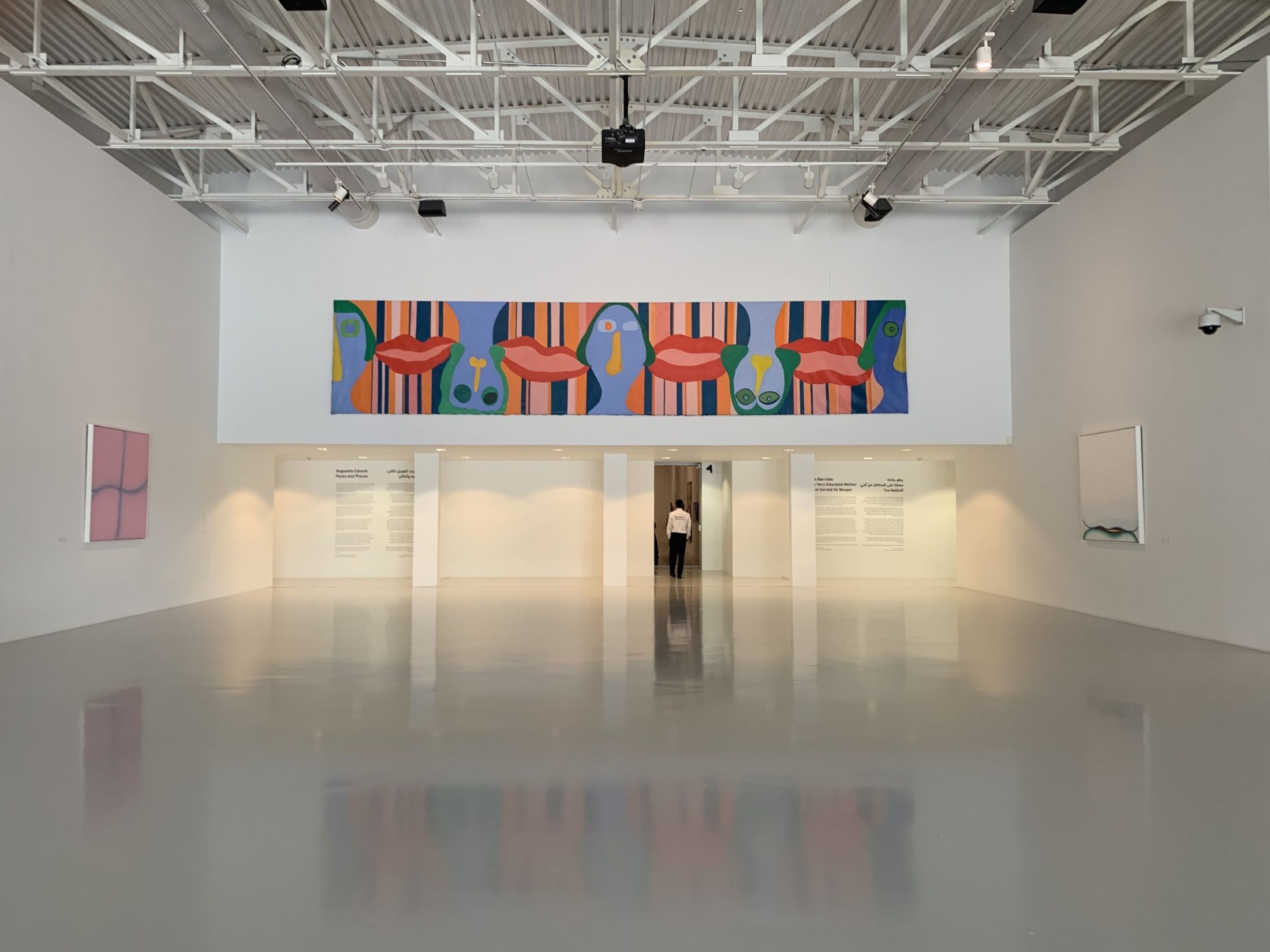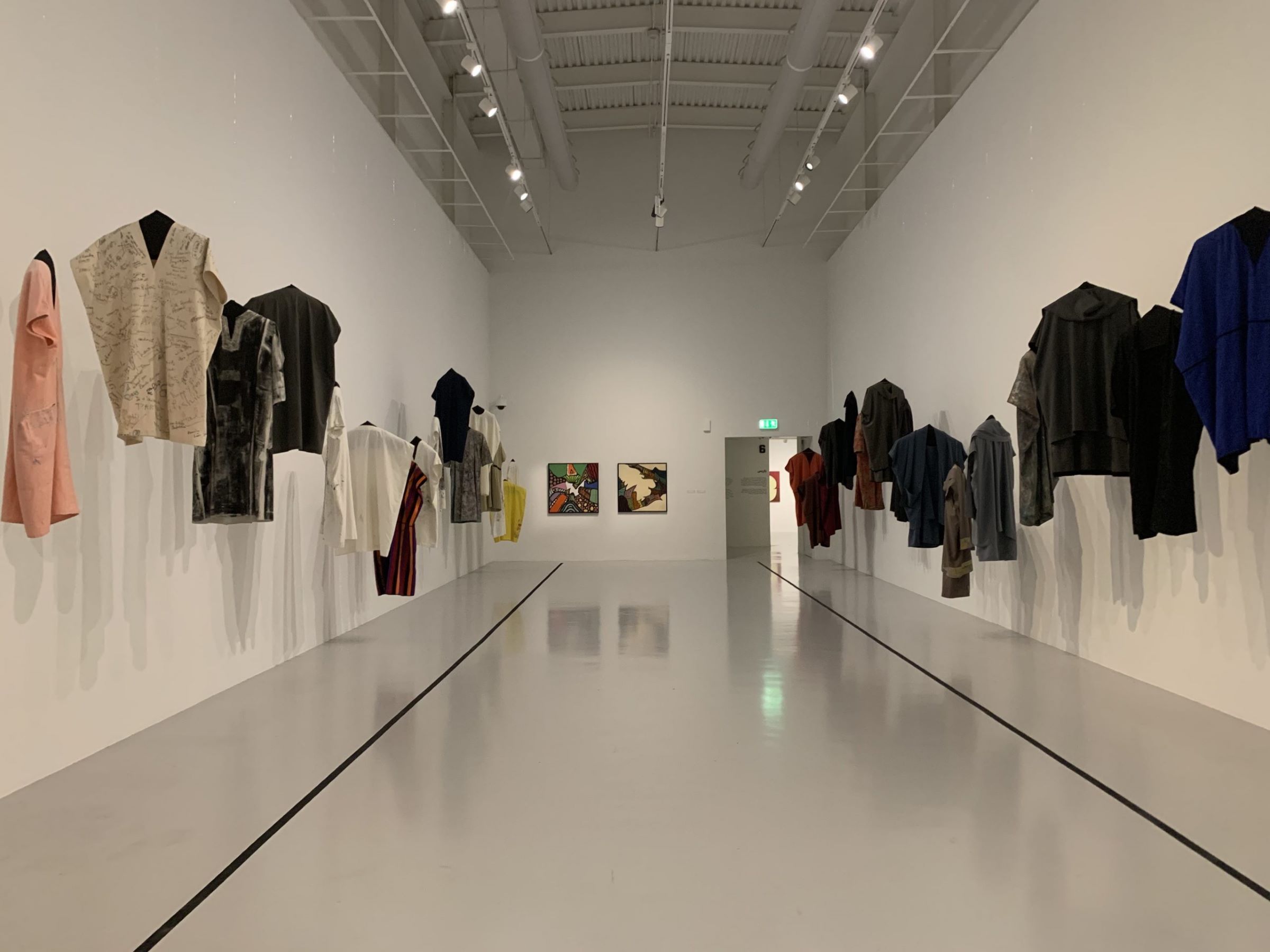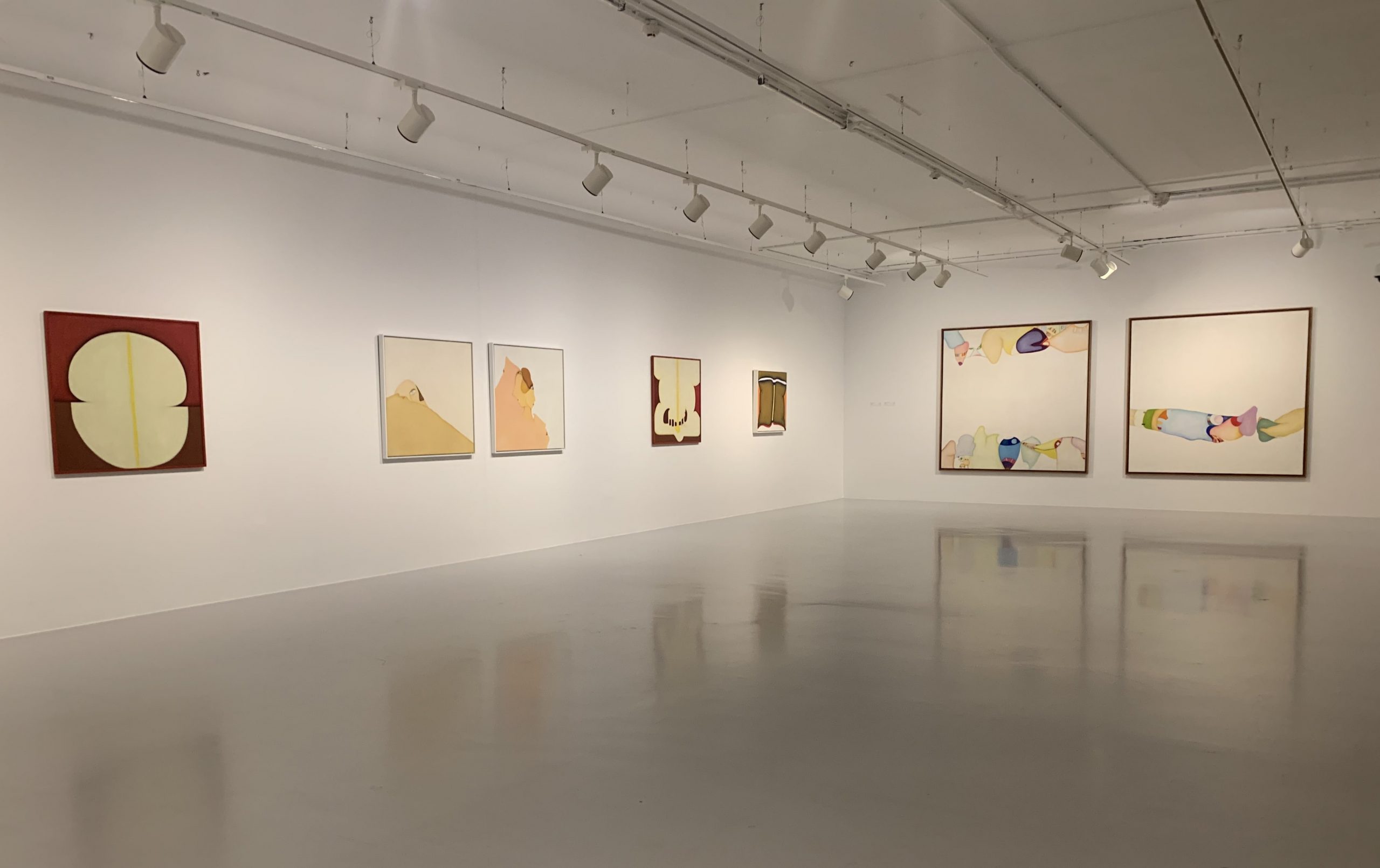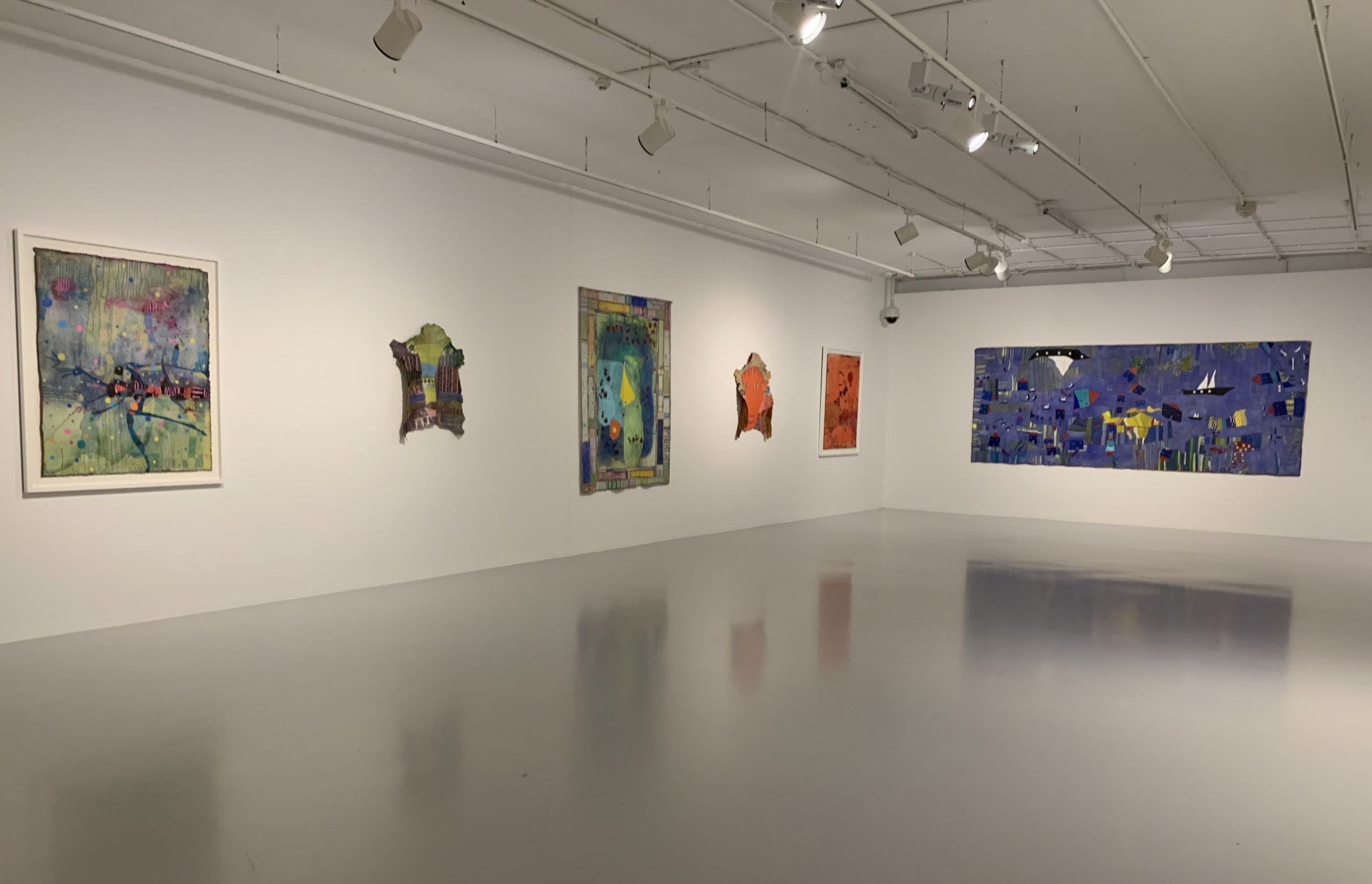 Huguette Caland: Faces and Places
Huguette Caland: Faces and Places


Huguette Caland (1931-2019) was a prominent artist and figure who paved the way for freedom of artistic expression. Born in Beirut, she was Lebanese by birth, French by marriage, and American by choice. At the age of 12 years old, her father Bechara El Khoury (1890-1964) became the first president of post-independent Lebanon in 1943. She pursued her art training at the age of 16 with an Italian artist who lived in Lebanon, Fernando Manetti. Afterwards, she attended the American University of Beirut and obtained her Fine Arts degree. Reaching adulthood, Caland resisted having a lavish life and the idea of becoming a housewife. Instead, she opted for freedom and an independent lifestyle. She married a Frenchman, with whom she had three children—Brigitte, Pierre, and Philippe. Concurrently, she continued to engage with the Lebanese art scene, and travelled later across continents to establish her artistic career.
Today, she is celebrated for her wide-ranging practice in art, fashion, and design which evolved and expanded across three different continents. As such, Caland’s recent exhibition Faces and Places at Mathaf: Arab Museum of Modern Art in Doha was organised geographically around three cities that shaped her personal and professional journey: Beirut, Paris, and California.


Presenting six decades of Caland’s work—varying from paintings, drawings, caftans, smocks to sculptures—the large solo exhibition traces her journey and reveals themes that informed her artistic practice. From the outset of the exhibition, we were greeted by a large-scale mural and two bookends paintings, Bribes de corps (1973) and Checkpoint (1974) which invoked Caland’s style of abstraction and colourful shapes.


The first gallery in the exhibition, dubbed Beirut, brings together a constellation of suspended caftans and smocks, in addition to drawings. While living in Beirut, Caland resisted Western fashion and replaced it with traditional loose caftans of her own design. After her father’s passing in 1964, Caland formally adapted caftans as her attire and wore it wherever she went. In 1970, she moved to Paris and continued to wear her caftans which eventually intrigued fashion designer Pierre Cardin, with whom she collaborated with to design a collection called Nour in 1979.
Further along the first gallery, Caland’s drawings, spanning over 50 years, illustrate her fascination with the line. In fact, the line transforms over the years from delicate lines into geometric abstraction, as seen in her paintings, smocks, and caftans. As we explored the exhibition further, we learnt that the ‘line’ is at the core of her oeuvre.


In the second space, Paris, Caland commenced her most known series titled Bribes de corps— made all throughout the 1970’s. Her exploration of the body, in all its shapes and forms, reveals a deeper appreciation of the human figure. While the body is never revealed, it is depicted partially in twisted, vibrant and colourful shapes and abstraction.


Lastly, California amassed Caland’s experience of six decades into a body of work that evolved from a minimalist approach into a detail-oriented style. In 1987, Caland conceived Venice, California as her home for over two decades. Through her large-scale works titled Faces and Places, where the exhibition borrows its name from, she memorialises faces and places that elapsed by her life. Merging lines, fragments of bodies and faces, landscapes and motifs, the paintings in the last gallery embody her mastery of techniques, life journey, and her experience of the past and present.


 Huguette Caland: Faces and Places
Huguette Caland: Faces and Places 

